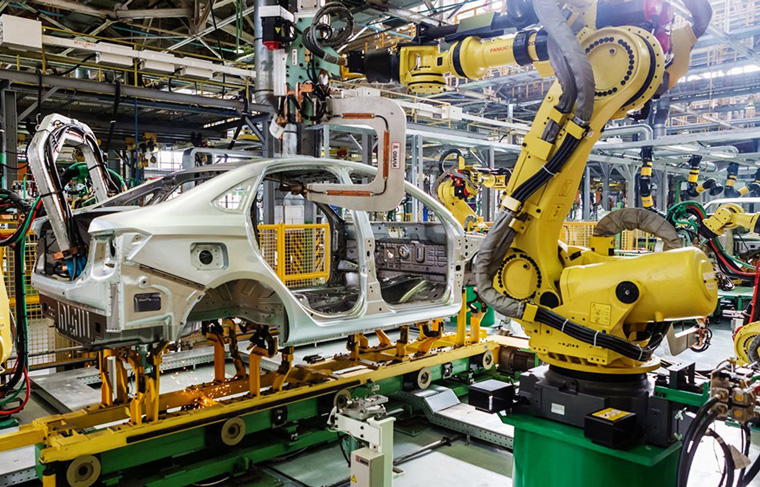Behind every critical temperature transition lies a question that cannot be ignored: why does the heating and cooling of a thermal shock chamber gradually slow down? When delivery deadlines are stretched, test efficiency is eroded, and product-launch schedules are disrupted, even a minor lag in temperature response triggers a chain reaction. Today we not only reveal the most common root causes, but also give you actionable fixes to restore “lightning-fast” thermal response, ensuring validation that is both efficient and reliable.
-
Insufficient or aged refrigeration capacity
Explanation: Declining compressor performance, refrigerant leakage or under-charge, fouling or blockage in condenser/evaporator coils directly weaken the refrigeration cycle, slowing cool-down; likewise, under-rated or degraded heaters reduce heating speed.
Impact & symptoms: At identical set-points, transition times lengthen noticeably; compressor cycles on/off repeatedly or runs continuously at full load.
Remedy: Check and service refrigerant charge; clean condenser/evaporator; replace aging compressor or up-size cooling/heating capacity. High-efficiency compressors and optimized circuit design can markedly shorten response times. -
Degraded heat-exchange efficiency
Explanation: Frost, dust, or oil films on evaporator/condenser surfaces, clogged air filters, or dust buildup in air passages reduce the contact efficiency between air and heat-transfer surfaces, retarding chamber temperature change.
Impact & symptoms: Non-uniform temperature distribution, sluggish response curve, abnormal fan operation or reduced airflow.
Remedy: Periodically clean heat-exchanger surfaces and replace/clean air filters; optimize duct and fan layout to ensure adequate convection; adopt higher-capacity or variable-speed fans to boost heat-exchange effectiveness.

-
Control system & sensor issues (improper PID, sensor drift)
Explanation: Poor PID tuning, excessively long sampling periods, or inaccurate temperature-sensor placement/calibration lead to sluggish control response or limited overshoot control.
Impact & symptoms: Control curve shows large lag, small oscillations, or inability to reach target ramp; sensor reading exhibits systematic offset from actual temperature.
Remedy: Recalibrate sensors and optimize placement (as close as possible to representative sample point); re-tune PID (or use auto-tuning controllers or advanced algorithms such as fuzzy PID or model-predictive control); shorten sampling interval for faster feedback. -
High chamber heat capacity & poor insulation
Explanation: Large test load with high thermal mass or degraded insulation (aged gaskets, door leakage) means the system needs longer to change overall temperature.
Impact & symptoms: Slower temperature change at identical power; condensation or temperature differential visible at doors or seals.
Remedy: Select a chamber with suitable volume for the test; improve sealing, replace gaskets, and upgrade insulation; in the design phase, account for load thermal mass when sizing heating/cooling power. -
Restricted air-cooled or water-cooled conditions
Explanation: Elevated temperature or insufficient flow of the cooling medium (ambient air or cooling water) serving the condenser lowers overall system cooling capacity.
Impact & symptoms: Cooling performance drops markedly at high ambient temperature; water-cooled system shows large pressure drop or rising water temperature, reducing refrigeration efficiency.
Remedy: Provide stable low-temperature cooling water or improve condenser heat-rejection (add surface area, increase water flow, or enhance ventilation); use forced-air or auxiliary cooling at high ambient temperatures.

-
Unreasonable test program settings
Explanation: Set ramp rates (°C /min) beyond equipment capability, poorly designed dwell/transition segments, or over-reliance on step changes can prevent the chamber from responding as expected.
Impact & symptoms: Frequent alarms or program failure at specific ramp rates; controller indicates load saturation.
Remedy: Establish realistic ramp rates based on equipment specs; insert buffer segments in the program to avoid abrupt steps; use multi-stage set-points to reduce instantaneous energy demand. -
Circulation fan or drive-component failures
Explanation: Reduced fan speed, worn bearings, or motor drive faults weaken internal convection, lengthening temperature-transition time.
Impact & symptoms: Insufficient airflow, change in noise level, abnormal fan current.
Remedy: Inspect and replace faulty fans or bearings; use variable-speed blowers to match required convection at different test stages. -
Blocked piping or sluggish control valves
Explanation: Sticking expansion, reversing, or three-way valves, or deposits/clogs in refrigerant/heating circuits, impair fluid flow distribution and response speed.
Impact & symptoms: Slow switching between cooling and heating, or insufficient cooling.
Remedy: Periodically service valves, clean piping, or replace blocked components; employ reliable brand-name actuators to improve switching speed and reliability.
A slower heating or cooling rate may look like a “minor equipment issue,” yet it can impose huge costs on test efficiency, validation cycles, and quality decisions. Pinpointing root causes and prescribing the right cure requires meticulous troubleshooting and a long-term view of equipment design and maintenance.












